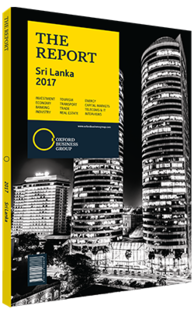Dammika Ranatunga, Chairman, Sri Lanka Ports Authority (SLPA): Interview

Interview: Dammika Ranatunga
To what extent can the SLPA encourage capacity building of port activities?
DAMMIKA RANATUNGA: Port development in Sri Lanka is not powered by the generation of imports and exports, as the economy is too small to support a large hub port with gateway cargo like those ports serving larger economies. Therefore, any port development has to focus on the demand for trans-shipment and related logistics businesses instead of domestic market growth. Accordingly, the SLPA has prepared a 30-year master development plan in addition to a proposed timescale and investment plan tied up with resources. These development plans will be further scrutinised with the Asian Development Bank in their study to perform the National Port Master Plan for the total port owned and operated by the SLPA.
The Port of Colombo has become the fastest-growing maritime centre of the South Asia region. This is the only container port in the country, and in 2016 it handled about 5.7m twenty-foot equivalent units (TEUs) of containerised cargo, of which over 75% was trans-shipment cargo. The port was ranked the 23rd busiest port in the world. The Port of Colombo’s main business is container trans-shipment, and Indian imports and exports account for 74% of this business. It is not practical to believe that Colombo is unchallenged because of its close proximity to sea routes; direct services and rival hubs will compel Colombo to be very careful in its investment plans.
How is the SLPA upgrading to support integration efforts in the industry and within the region?
RANATUNGA: Fully automated document handling systems are in progress, with the SLPA to replace the old, inherited system. This will release ample amounts of valuable human hours to income generating areas; increasing the effectiveness of management and cost control, as well as reducing the cost of human error, operational costs and the need for reserved office space. The new systems will integrate all of the functions of the SLPA to a common platform of seamless connectivity in a paperless world, and ensure a totally transparent environment with increased accountability and manageability. The SLPA will be able to extend services to its customers in a hassle-free and friendly environment, where the ultimate aim is for the customer not needing to visit the SLPA for their cargo clearance needs. Furthermore, the SLPA is implementing e-solutions in the cargo delivery system to serve the shipping lines, cargo operators and port users by sharing electronic data, which will ensure speedy cargo deliveries for importers and exporters in the future. This will enable the Port of Colombo to be the most efficient port in the region.
What enhancements are planned for the East Container Terminal (ECT) as part of the Colombo Port Expansion Project?
RANATUNGA: The ECT is designed to be a deep water container terminal to serve ultra-large container vessels over a 18,000 TEU capacity. The terminal is planned to have a 1200-metre linear quay wall comprising three 400-metre-long berths with reclamation behind for the container yard, terminal buildings and other facilities. ECT - phase one comprises a 600-metre quay wall in a finger pier configuration, and the associated container yard and other utility facilities – in an area of approximately 20 ha – has already been constructed with a 440-metre berth ready for operation.
Development of the terminal will be implemented as a public-private partnership. The SLPA has financed infrastructure for phase one of the project, which would form part of the total development where the appointed concessionaire is expected to finance and develop the ECT for a term of 35 years. Subsequent to completion, the whole terminal will be managed by the prospective concessionaire on a joint venture basis with the SLPA and within a build-operate-transfer structure.
You have reached the limit of premium articles you can view for free.
Choose from the options below to purchase print or digital editions of our Reports. You can also purchase a website subscription giving you unlimited access to all of our Reports online for 12 months.
If you have already purchased this Report or have a website subscription, please login to continue.

